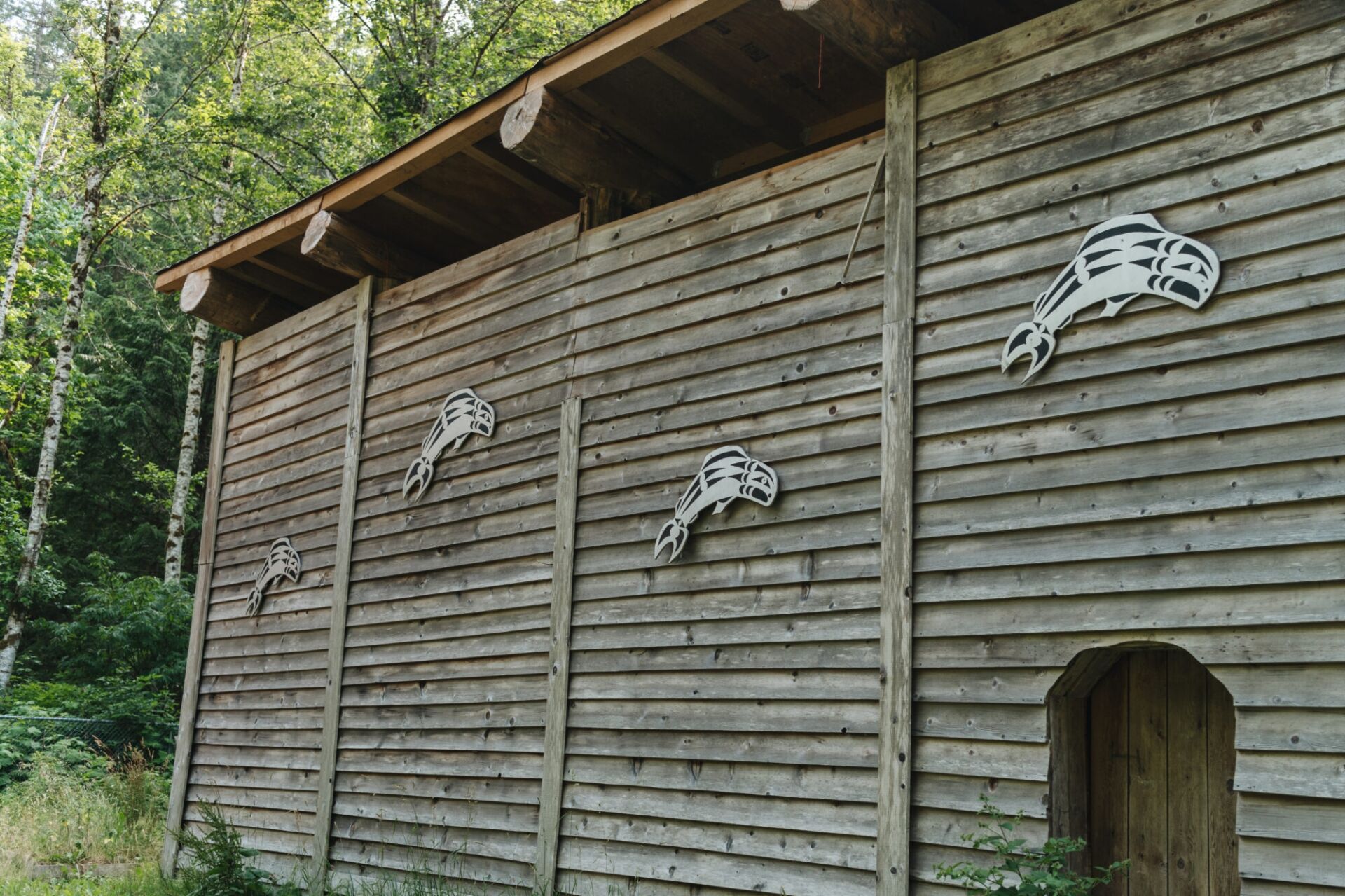
Our History
Our rich history spans millennia, evidenced by an archaeological site dating back 8,600 years.
Tracing Our Roots
In 2023, we celebrated 100 years since sixteen Sḵwx̱wú7mesh villages amalgamated to become the modern Squamish Nation – or Sḵwx̱wú7mesh Úxwumixw. However Sḵwx̱wú7mesh history and the connection to our territory span thousands of years, long before Amalgamation.
The path toward Amalgamation took many years to conclude, with some sources mentioning up to thirteen years, resulting in a unanimous agreement to unify by the Members and chiefs of the sixteen bands. The goal of Amalgamation was to overcome feelings of inequality or disagreement among Squamish People, ensure good government of the Nation, and consolidate all properties, interests, and accounts held in trust into a single entity for the benefit of all, including current and future Members.
Longhouse History
Prior to settlers arriving in Greater Vancouver, Squamish People lived in family units in multi-family housing, often called longhouses, and most had dual residencies, moving depending on the season.
Creation of Reserves
Reserve lands along Howe Sound and Burrard Inlet were allotted and surveyed. Locations of reserves were established at village sites or at traditional food gathering sites. A total of 26 reserves were assigned for use by the Squamish People. All remaining land was claimed as Crown lands.
Reserve Lands Sold
Various reserve lands were leased out or sold for industrial sites, and all residents were moved off the land. The surrounding cities began expanding during this period.
Indian Act Amendments
The federal government amended the Indian Act to allow the Crown to purchase urban Indian reserves without the consent or approval of the people living there.
Calls for Amalgamation
Andy Paull, a Sḵwx̱wú7mesh leader, began to play a larger role representing various Squamish People’s interests to the Canadian government. He wrote proposals for Amalgamation, working with Chief Harry, and acted as an interpreter. The chiefs of several villages made appeals to the government to stop transactions that did not recognize family ties and the sharing of resources. These appeals and a call for the Amalgamation of villages as one Nation were unsuccessful.
A Source of Controversy
During this time, there were several sales and expropriations of reserve land that generated substantial revenue for certain Sḵwx̱wú7mesh communities. This became a source of controversy as only those who lived on the area of land being sold received any of the profits from these transactions and this contributed to feelings of unfairness and inequality.
The Road to Amalgamation
The Amalgamation appeals and discussions among Sḵwx̱wú7mesh leaders and government officials took eight years to conclude. The final two years of negotiations and meetings were critical in the movement for one unified Nation.
Prayer of Amalgamation
During a community meeting attended by recognized Sḵwx̱wú7mesh chiefs and government officials, the “Prayer of Amalgamation” petition was approved. It was signed by seventy-six Squamish People and the chiefs of the sixteen Indian bands.
Squamish People United
Sixteen Indian bands, with a combined population of 412 Members, were united into one Squamish Nation – or Sḵwx̱wú7mesh Úxwumixw. All properties, interests, and accounts held in trust were to be treated as belonging to a single entity of the Squamish People.
A Dynamic Force
The Amalgamation created the conditions for the success of the Squamish People. The population has grown to more than 4,000 Members, and the government has evolved over time as well. Today, Sḵwx̱wú7mesh Úxwumixw is a dynamic force in the region, rooted in our traditions while striving for great things over the next 100 years.
wa iy̓ím ta Sḵwx̱wú7mesh (Squamish Strong).